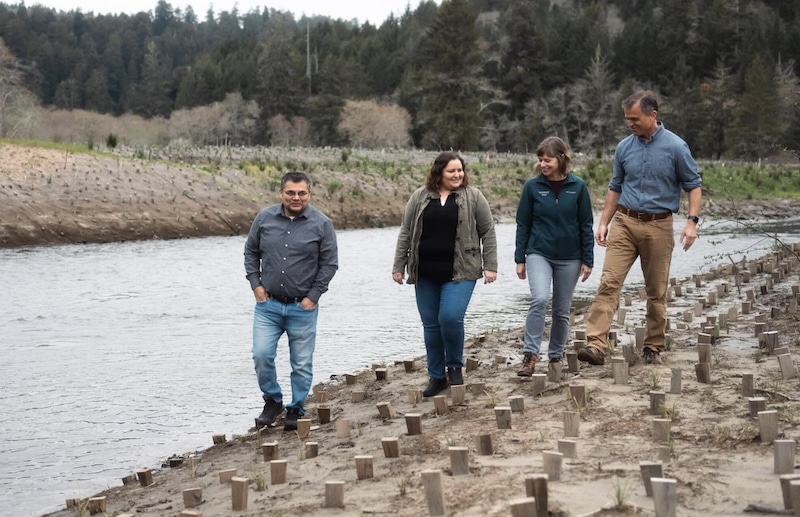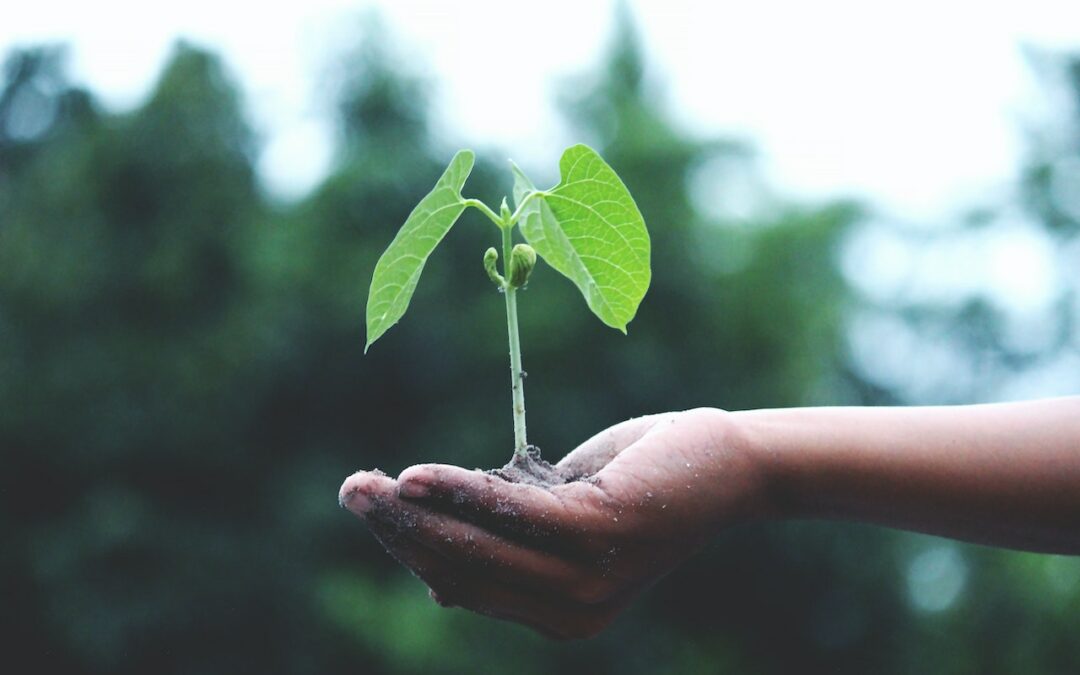
What do young drivers think of electric cars?
We meet a bunch of next-generation drivers as they get to grips with electric power for the first time

We meet a bunch of next-generation drivers as they get to grips with electric power for the first time

California’s Yurok Tribe had 90 percent of its territory stolen during the mid-1800s gold rush. Now, it will be getting a piece of its land back that serves as a gateway to Redwood state and national parks. For decades, the ancient redwoods on former Yurok lands were decimated for lumber and a sawmill built to […]
The post California’s Yurok Tribe Becomes First to Steward Land Alongside National Park Service appeared first on EcoWatch.

Nappies and sanitary pads present a problem for sustainability because their absorbent parts and waterproof layers contain plastics and other synthetic polymers. When thrown away, they can take hundreds of years to decompose.
Now, researchers have found a way to replace these problematic materials with porous components made from the protein biomass often discarded by the food and agricultural industries. These components are sustainable and biodegradable, and could potentially allow future nappies and sanitary pads to be flushed down a toilet or used as fertiliser.
Antonio Capezza, a researcher in the polymeric materials division at KTH Royal Institute of Technology in Sweden, presented these findings at the spring meeting of the American Chemical Society (ACS), held in March 2024.
Capezza said that in Europe, regulations discourage the use of certain petroleum-based plastics in disposable goods; however, there aren’t clear guidelines or regulations to ban these plastics in nappies, sanitary pads and other disposable sanitary items because a good replacement hasn’t been available. “But we’re hoping to change that with our protein-based materials,” he said.
Capezza is collaborating with researchers at KTH, the Swedish University of Agricultural Sciences and other institutions, including Simón Bolívar University in Venezuela, the University of Tokyo in Japan and the University of Seville in Spain.
Ironically, the project had its origins in a demonstration designed to teach students what can go wrong in the lab. Capezza was showing them how to make bioplastic filaments using proteins. To mimic the impact of unwanted humidity, he added wet cotton, which caused the mixture to foam. Once the product dried, the material had become super porous, meaning it could sop up liquid like a sponge.
“So it was sort of an accident, but a good one, because that led us to an entirely new line of research,” he said.
While there are already some cotton-based alternatives to plastic sanitary products on the market, these rely on virgin cotton and may need bleaching or other chemical treatment for their production. Capezza’s team identified a more sustainable material source in the proteins and other natural molecules left over from food and agricultural production that might otherwise be landfilled or incinerated, including zein from corn, gluten from wheat and natural antioxidant extracts.
The researchers mixed the proteins together in different proportions and added water and bicarbonates, such as baking soda, as foaming agents; the sweetener glycerol as a plasticiser; and natural extracts as preservatives.
They then used equipment and processing techniques from the plastics industry, including extrusion, to make various components commonly found in pads and nappies. In much the same way as a pasta maker, the extruder enabled the team to produce filaments and flat sheets while simultaneously allowing them to foam the materials. These techniques produced a flat ‘nonwoven’ layer that remained dry to the touch while allowing liquid to rapidly pass through; a fluffy porous material with super-absorbent properties that captured liquid; and waterproof films to protect outer garments.
As a proof of concept, the researchers assembled these components to make protein-based absorbent prototypes that resembled disposable sanitary products. Once exposed to water or soil, the materials completely biodegraded in a few weeks, releasing carbon, nitrogen, phosphorus, amino acids and other compounds that nature can reuse as nutrients.
Compost from these products (or any waste produced at the manufacturing stage) could be used to fertilise crops such as corn and wheat, which would in turn provide the starting materials to make new sanitary products. “So it’s a fully circular design,” Capezza said.
The researchers have already shown that plants grow longer leaves and roots when exposed to this compost. “And our tests have shown that because it’s protein based, there’s no risk whatsoever that these products will pollute the soil with microplastics or other unwanted chemicals when they break down,” Capezza added.
While the performance of protein sanitary pads is similar to that of conventional pads, protein nappies aren’t as absorbent as their plastic counterparts. That means protein nappies either need to be thicker, or their formulation needs to be tweaked to improve absorption. To boost liquid uptake and mechanical strength, the researchers are now exploring the addition of lignocellulose, a blend of lignin and cellulose found in plants. This material is a low-value by-product of the farming and forestry sectors. Results to date show its addition is bringing performance close to that of conventional nappies.
The team is now preparing for pilot studies to test the feasibility of scaling up production. Additional evaluations, including human skin irritation tests, will need to be done before any of these products can go on the market, Capezza said.
The research was funded by the Bo Rydin Foundation and Formas, a Swedish government research council for sustainable development. The team has filed a patent application on the technology and process.
Image credit: iStock.com/Collab Media

Rising demand from artificial intelligence is forcing big technology companies to look beyond wind and solar for clean energy.

Advancing Low-Emissions Agriculture and Food Systems
jschoshinski
Wed, 03/20/2024 – 18:49
At last year’s 28th Conference of the Parties to the UNFCCC (COP28), the U.S. was one of 159 countries to sign the Sustainable Agriculture, Resilient Food Systems, and Climate Action declaration, a global recognition that climate and food security goals go hand-in-hand.
USAID has mirrored this movement internally by integrating climate change, agriculture, and food systems under the recently formed Bureau for Resilience, Environment, and Food Security (REFS). Additionally, USAID’s 2022-2030 Climate Strategy explicitly calls for transforming food systems to feed more people, bolster resilience, reduce waste, minimize environmental destruction, and contribute to climate change mitigation.
Indeed, truly transformative changes are needed to limit temperature rise to 1.5 degrees Celsius while lifting hundreds of millions of people out of food insecurity and avoiding the devastating impacts of malnutrition on children and their mothers. Analyses from West Africa predict that a 2 degrees Celsius increase in temperature will result in a 7.4 percent increase in stunting crop yields and an additional 590 million people undernourished globally by 2050, reversing hard-won nutrition gains.
The U.S. Government Global Food Security Strategy also elevates the interaction between the climate crisis and food security, emphasizing climate adaptation and mitigation in its results framework. USAID is investing in programs, especially under Feed the Future, that help tackle the climate and food security crises together.
For example, the Agency supports farmers with tools to build their resilience, such as drought-resistant seeds to help farmers grow more in the face of a changing climate, better crop and soil management practices to enhance water conservation, and improved forecasting capabilities to strengthen farmers’ and local governments’ planning and decision making. In cases where climate shocks overwhelm communities’ ability to prepare for crises, USAID supports early warning systems to tackle emergency food insecurity.
At the same time, agriculture and food systems account for roughly one-third of global greenhouse gas (GHG) emissions, presenting a significant opportunity for mitigation gains. Sources of emissions vary dramatically by type of ecosystem or agriculture system. In geographies and value chains with high emissions, it is critical to take urgent mitigation actions to decrease emissions. In other countries or regions, where current emissions are low, the optimal strategy may be to reduce future emissions intensity (i.e., emissions per unit of product) by increasing productivity.
USAID’s approach to Low Emissions Agriculture and Food Systems (LEAFS) serves to substantially reduce GHG emissions compared to business-as-usual scenarios and/or emissions intensity. LEAFS focuses on targeted emissions reductions as well as supporting adaptation efforts with mitigation co-benefits through multiple funding streams, including agriculture, climate, biodiversity, water, and governance. Sustainable landscapes programming has been especially successful in working at the intersection of mitigation and food systems; this work will be further detailed in forthcoming blogs.
Low Emissions Agriculture and Food Systems Development: Opportunities in Support of Food Security and Climate Action details context-driven solutions for mitigation in agriculture and food systems, including:
Agricultural productivity paired with effective land governance
Improved livestock and crop management
Sustainable supply chains and consumer demand management
Systems approaches to achieve impact at scale.
USAID assessed how several agriculture programs influenced GHG emissions and outlined how high-impact practices contribute to low-emissions agricultural development. USAID has also produced Feed the Future activity design guidance for Climate-Smart Agriculture and Food Systems and Integrated Natural Resource Management programs to support safeguarding productivity gains and livelihoods in light of a changing climate and achieving emissions reduction co-benefits.
USAID is committed to working with partners around the world on policy and programming efforts to make meaningful strides towards a more resilient, low-emissions, and food-secure future.
——
This blog is the first in a four-part series outlining USAID’s approach and efforts towards achieving low-emissions agriculture and food systems.
Teaser Text
USAID’s approach to Low Emissions Agriculture and Food Systems serves to substantially reduce GHG emissions compared to business-as-usual scenarios and/or emissions intensity.
Subtitle
How USAID is Championing Food Security and Climate Action
Publish Date
Wed, 03/20/2024 – 12:00
Author(s)
Caitlin Corner-Dolloff
Alyxandra Ruzevich
Hero Image
_MG_6253.jpg
Blog Type
Blog Post
Strategic Objective
Adaptation
Integration
Mitigation
Region
Global
Topic
Adaptation
Agriculture
Climate-Resilient Agriculture
Emissions
Climate Change Integration
Climate Strategy
Food Security
Mitigation
Resilience
Sectors
Agriculture and Food Systems